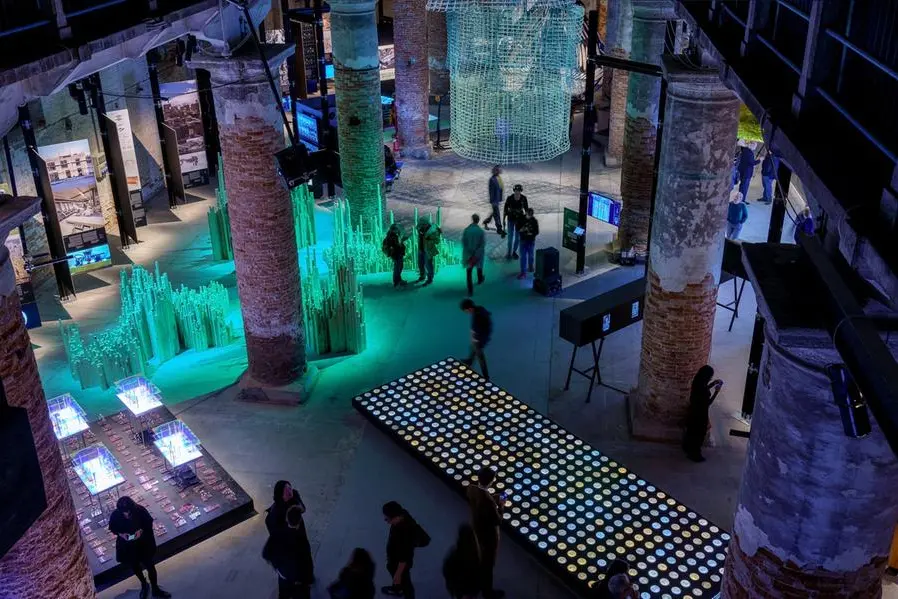
DFF, MIT Unveil World's First AI Project For Tree-Cooled Cities
-p fetchpriority="high" decoding="async" class=" wp-image-109610" title="dff mit arabian post" src="" alt="dff mit arabian post" width="303" height="202" srcset=" 800w, 768w, 128w, 898w" sizes="(max-width: 303px) 100vw, 303px" />
A new initiative unveiled by the Dubai Future Foundation in collaboration with the MIT Senseable City Lab presents a data-intensive approach to urban greenery by applying artificial intelligence to evaluate the cooling effect of trees in multiple global cities. The project, named“Re-Leaf”, harnesses satellite imagery, street-level visuals and thermal data across locations such as Dubai, Amsterdam, Los Angeles and Rome to measure how trees can function as natural cooling infrastructure.
Re-Leaf reveals that shade and evapotranspiration from trees can reduce local surface temperatures by up to 15 °C compared with surrounding paved or built areas. One key finding is that drought-resistant species such as neem trees outperform more commonly planted palms in arid urban environments. DFF described the work as a shift in treating urban vegetation“as essential infrastructure for the cities of tomorrow”.
The initiative emerges under the banner of the 19th International Architecture Exhibition in Venice, curated by Carlo Ratti, in which Re-Leaf features as a special project. The exhibit presents city-scale“skyscraper-like” visualisations that depict greenery levels across the participating cities, with taller towers indicating higher vegetation cover.
Dubai's establishment of the first Middle East-based Senseable City Lab via DFF provides a focal point for this research. The lab, working in partnership with MIT, developed the algorithms and datasets behind the project. From a strategic perspective, the work aligns with Dubai's ambition to be an innovation hub and to address the demands of climate-resilient urban planning.
Beyond the headline figure of 15 °C cooling, the dataset comprises more than 2,000 trees across the four cities, allowing comparative analysis of species performance in different climates and urban morphologies. The research team emphasises that while the act of planting trees is well-known, the novelty lies in quantifying their impact using high-resolution AI tools and translating the results into actionable urban design decisions.“In a hotter world, trees must be seen as essential infrastructure, not just decoration,” Ratti said.
See also Goldman Sachs Predicts Gold Could Surge to $4,900 by 2026Urban planners and environmental scientists are responding to the project by pointing out its potential to shift policy focus from reactive mitigations-such as heavy air-conditioning-to proactive green infrastructure deployment. According to one expert, tree shading and transpiration“are vital for climate-responsive urban design”. For cities in arid or semi-arid zones-where energy use for cooling is high and water scarcity is acute-the findings are particularly relevant. The identification of species that deliver stronger cooling while requiring less water offers practical guidance for future planting strategies.
However, the project also faces scepticism around questions of scalability and implementation cost. Critics ask whether data-rich analyses can translate into large-scale urban forestry programmes in dense built environments, and note that factors such as soil depth, maintenance regimes and tree lifespan require further study. One architecture-critique article raised a broader question:“Do we need AI to confirm that trees cool cities?” highlighting the risk of attending to measurement rather than action.
The choice of cities for analysis – Dubai, Los Angeles, Amsterdam and Rome – reflects a mix of climatic zones and urban typologies, offering the chance to test how vegetation behaves across contexts. Amsterdam, with a temperate maritime climate, provides contrast to Dubai's arid conditions, while Rome offers a dense historical fabric and Los Angeles a sprawling low-rise geography. Re-Leaf's catalogue of thousands of tree species and urban cooling maps explicitly aims to support urban designers and policymakers.
For DFF and its partners, integrating tree-cooling metrics into master-planning holds promise beyond aesthetics. The project's immersive display at Venice functions not only to showcase technology but to prompt debate on how cities invest in nature-based solutions. DFF Director of Dubai Future Labs, Khalifa Al Qama, described the work as generating insights with global value.
See also Saudi's Ambitious Reform Drive Pressures Public FinancesAlso published on Medium.
Notice an issue? Arabian Post strives to deliver the most accurate and reliable information to its readers. If you believe you have identified an error or inconsistency in this article, please don't hesitate to contact our editorial team at editor[at]thearabianpost[dot]com. We are committed to promptly addressing any concerns and ensuring the highest level of journalistic integrity.
Legal Disclaimer:
MENAFN provides the
information “as is” without warranty of any kind. We do not accept
any responsibility or liability for the accuracy, content, images,
videos, licenses, completeness, legality, or reliability of the information
contained in this article. If you have any complaints or copyright
issues related to this article, kindly contact the provider above.


















Comments
No comment